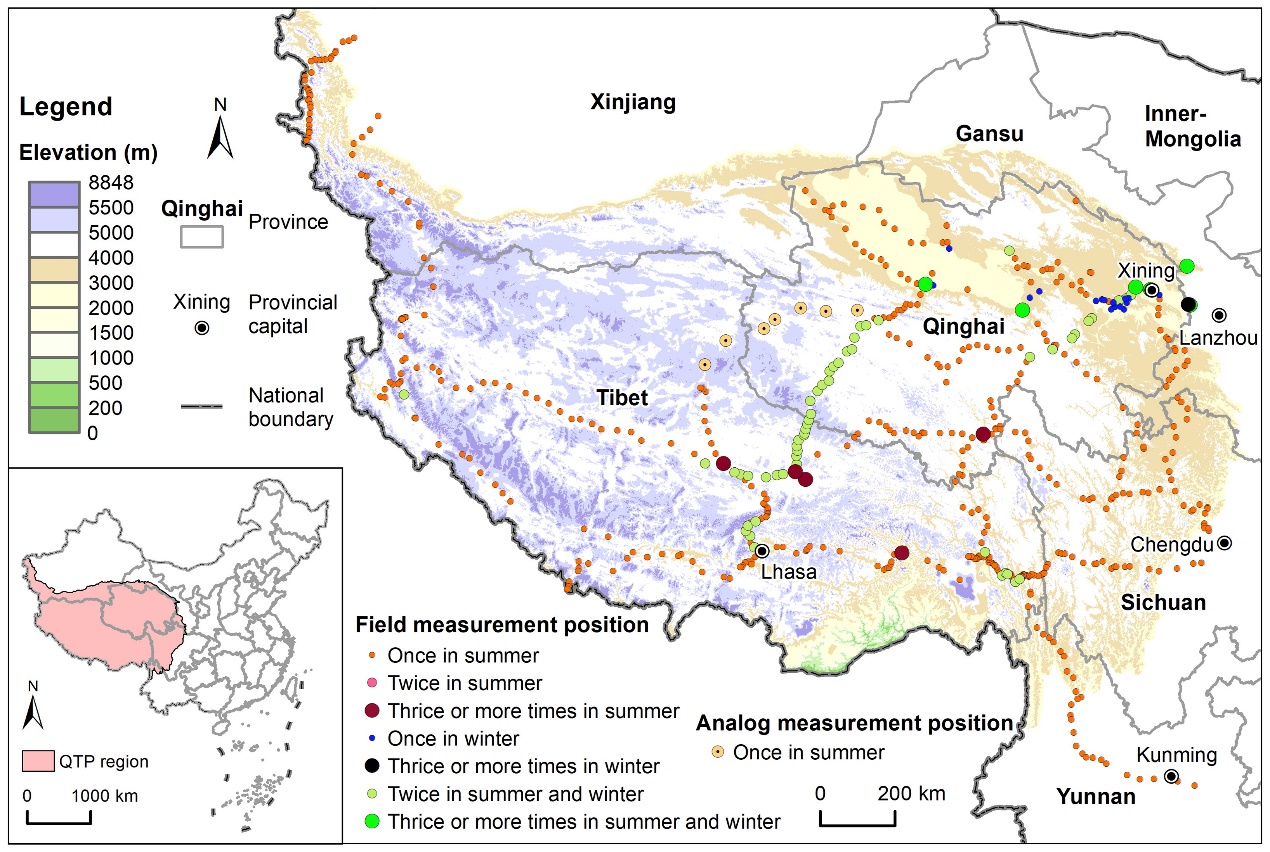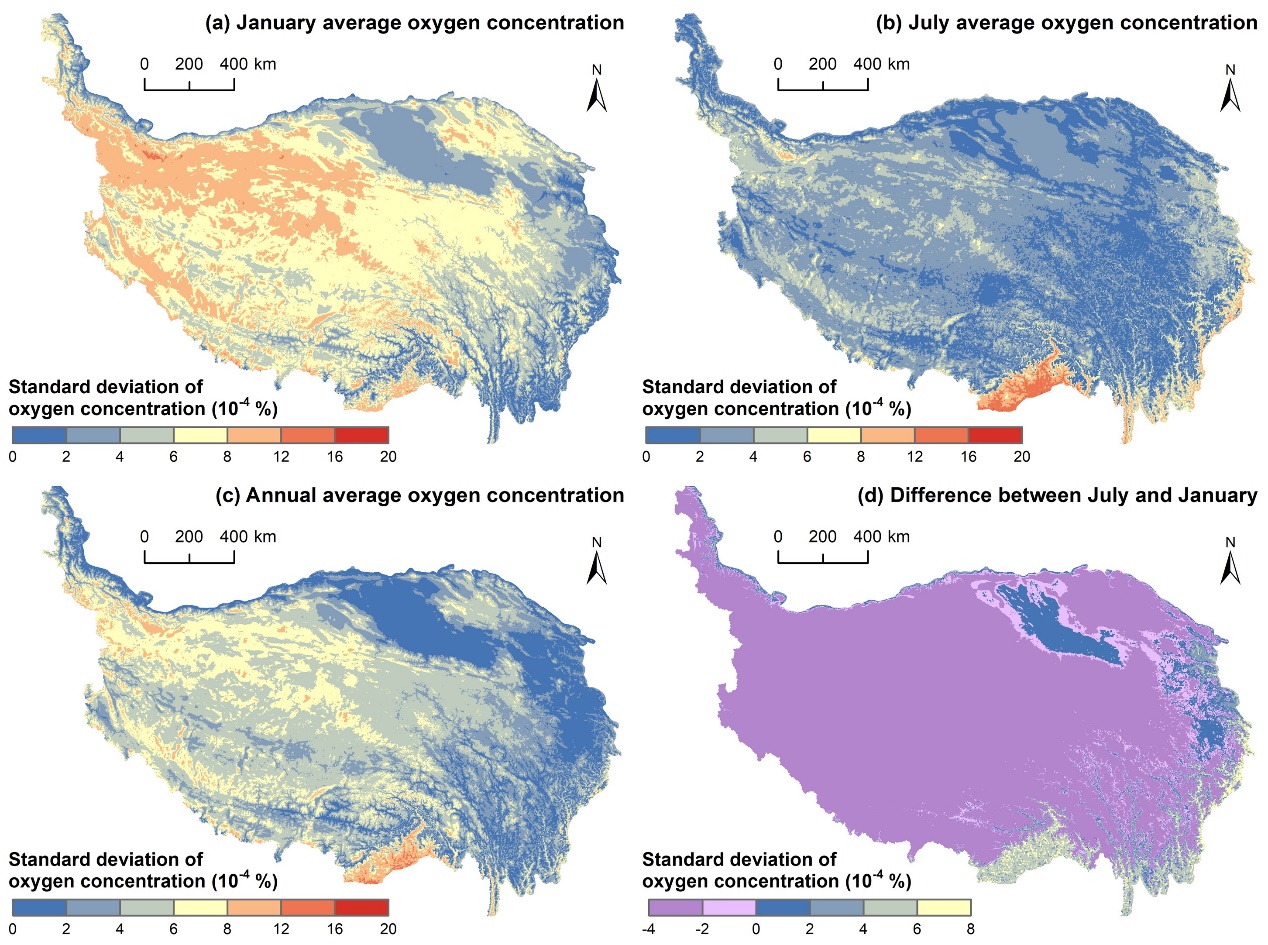Professor Shi Peijun’s team from the Faculty of Geographical Sciences released the results of surface oxygen concentration on the Qinghai-Tibet Plateau in Scientific Data
Oxygen is the necessary condition for living things to survive. For the Qinghai-Tibet Plateau (QTP), which has an extremely fragile ecological environment, hypoxia has increasingly become an extremely important environmental risk factor, seriously affecting the health and high-quality development of humans and animals in the plateau area. It is particularly urgent to pay attention to the problem of hypoxia and carry out related research on the QTP.

Accordingly, the team of Professor Shi Peijun of Faculty of Geographical Sciences recently published a research paper titled Surface oxygen concentration on the Qinghai-Tibet Plateau (2017–2022) in the Nature sub-journal Scientific Data. Hu Xiaokang, a doctoral student in the Department of Geographical Sciences, is the first author of the article, and Professor Shi Peijun and Associate Professor Jiang Lu are the co-corresponding authors of the article.
Through the second scientific expedition to the QTP and field measurements, the paper obtained oxygen content data of 807 measurement points on the Tibetan Plateau from 2017 to 2022, as well as corresponding geographical environment data such as longitude and latitude, altitude, atmospheric pressure, temperature, and relative humidity. Also, using a 1km×1km field quadrat, the vegetation coverage of 51 measurement points on the QTP was measured.

Based on the measured surface oxygen content of the QTP, the research team studied the relationship between altitude, temperature, leaf area index and oxygen content, and constructed an estimation model for the surface oxygen content of the Qinghai-Tibet Plateau. The annual average, January average and July average oxygen content data and oxygen content difference data on the QTP between July and January were also simulated and estimated.

The study analyzed the results from four dimensions: instrument error, environmental error, measurement method error, and human error. The results showed that the potential error of the actual measured data was small and the measurement accuracy was high. At the same time, based on cross-validation, uncertainty analysis and other methods, the evaluation shows that the simulation accuracy of the spatial distribution data of surface oxygen content in the QTP is high and the uncertainty of the estimation results is low.

The study fills the gap in the research on oxygen content in the QTP, provides data support for the analysis of influencing factors of surface oxygen content and research on spatiotemporal characteristics, and is important for in-depth understanding of the QTP and even the global highlands in the context of global climate change. Also, it is important to the work of protecting the ecological security of high-altitude areas, improving the health and well-being of residents/tourists, and livestock, and promoting the stability, prosperity and high-quality development of high-altitude areas.


